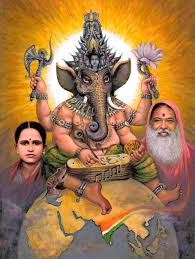Any action performed in a life and which does not bear fruit immediately, accumulates. This accumulated lump is called ‘Sanchita karma’ (sanchaya means deposit). Because human birth comes after several other births, there will be a great degree of accumulation. It is not possible to enjoy or to suffer (based on past actions), the entire accumulated balance in one birth.
Therefore the Almighty sets apart a portion from that accumulated balance (sanchita karma) which will be experienced in a particular birth. This is called prārabdha karma i.e. the portion due to be experienced in one birth. It comes along with the person at birth. Along with this, the person also has the freedom to perform newer actions in the birth. Unexpectedly winning a lottery is an example of prārabdha karma.
Sanchita was the accumulated balance. Prārabdha is the present experience. That portion of sanchita which remains after prārabdha was removed, is called āgāmi karma. This āgāmi karma is responsible for future births.
Based on this description, it is said that prārabdha is inevitably experienced during a life. It is likened to an arrow, which once shot, cannot be recalled. The intention of this example is to show the strength of the prārabdha. But it does not mean there is no remedy at all. Just as an eminent warrior can neutralize the arrow shot towards him with another equal arrow, the person can, with steadfastness, discrimination and judicious observance of atonement rituals, overpower the effects of the prārabdha.
Sadgurus often show the path to their disciples to overcome the effects of the prārabdha karma.
(Bhaktimala Nov 1997)
